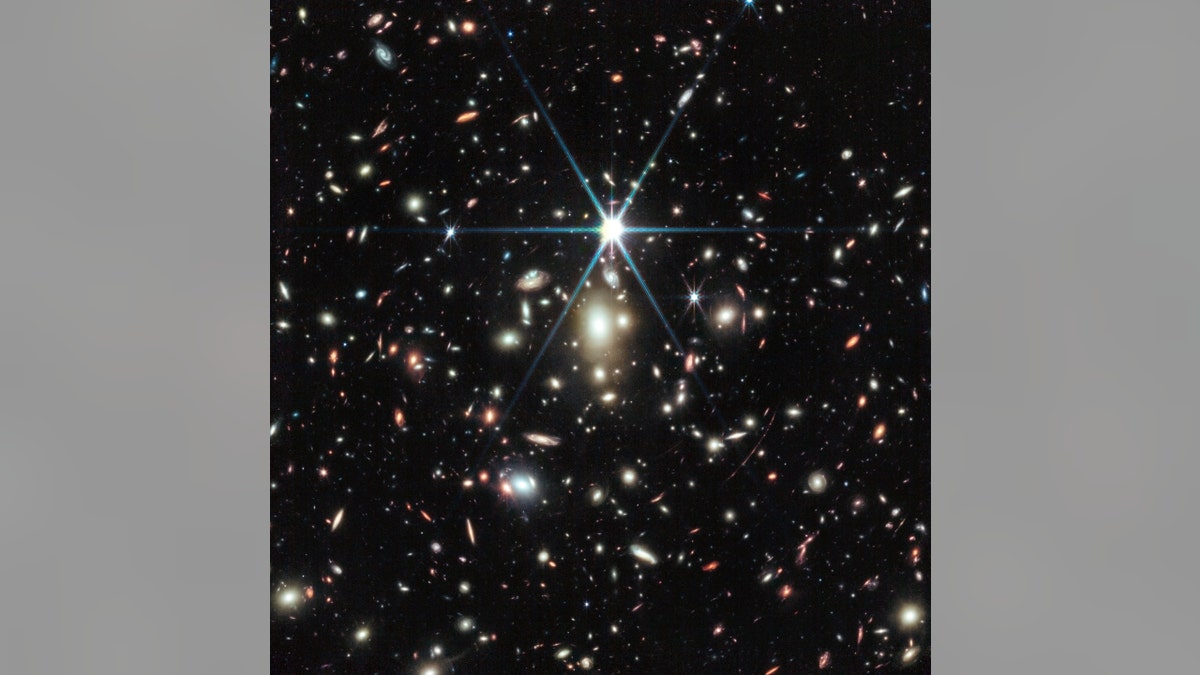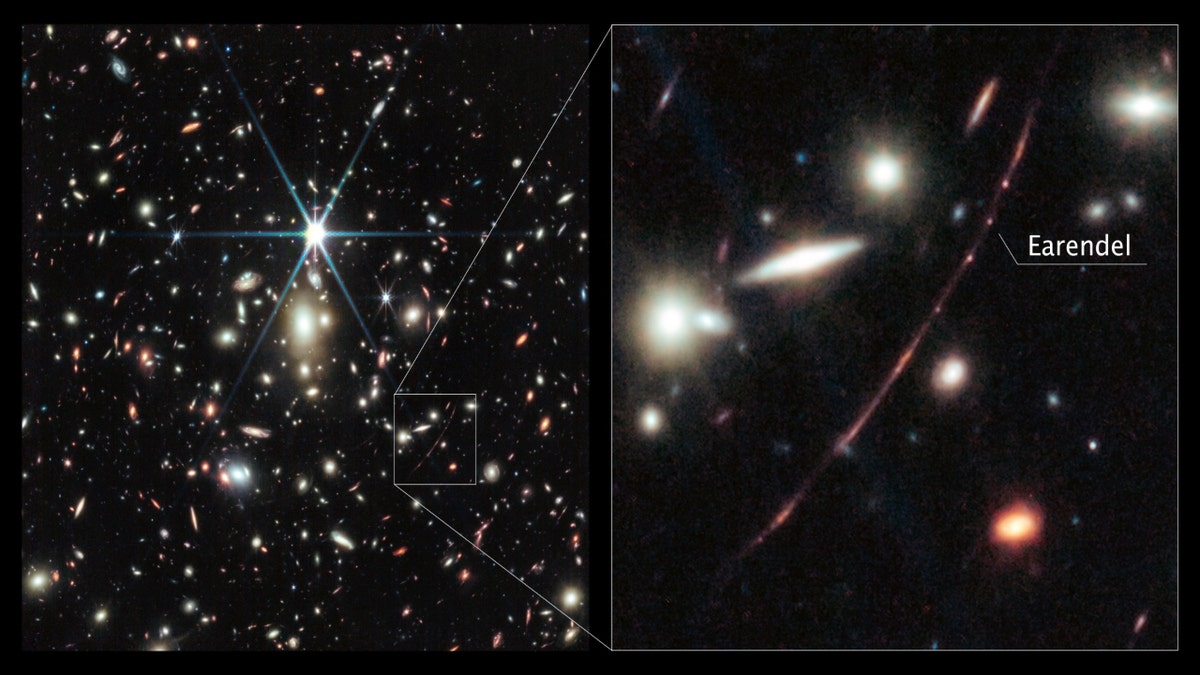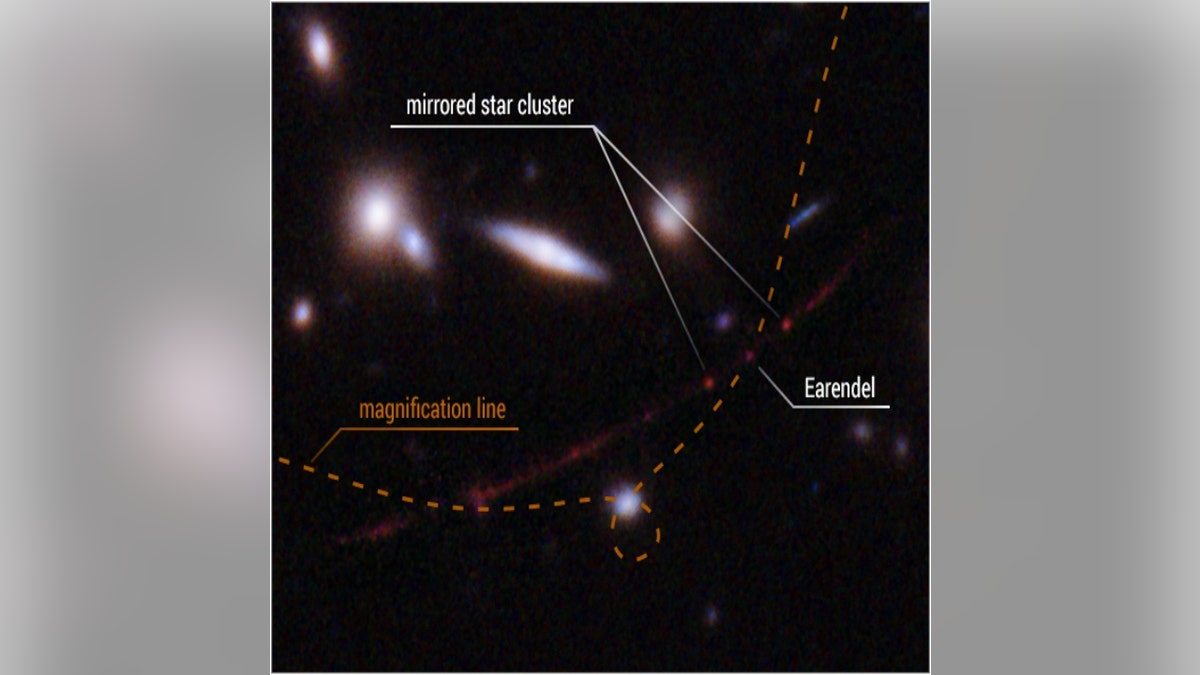Webb Space Telescope allows us to 'look into the past': Theoretical physicist
Theoretical physicist Dr. Michio Kaku explains the significance of new images provided by NASA's Webb Space Telescope on 'Sunday Night in America.'
Observations from NASA's James Webb Space Telescope of Earendel – the farthest star ever detected – reveal a massive B-type star that is more than twice as hot as our sun and a million times more luminous.
The star in the very distant universe, and a billion years after the big bang, was captured by the observatory's Near-InfraRed Camera instrument.
NASA said that Earendel – which means "morning star" in Old English and is, perhaps, a familiar-sounding name to fans of "The Lord of the Rings" trilogy – is located in the Sunrise Arc galaxy.
It is detectable only due to a combination of technology and gravitational lensing. Gravitational lensing occurs when a celestial object like the foreground galaxy cluster has such a massive gravitational pull that it warps time and space around it.
WEBB SPACE TELESCOPE CAPTURES MYSTERIOUS 'QUESTION MARK' IN SHOT OF FORMING STARS

A massive galaxy cluster contains the most strongly magnified galaxy known in the universe’s first billion years: the Sunrise Arc, and within that galaxy, the most distant star ever detected. In this image, the Sunrise Arc appears as a red streak just below the diffraction spike at the 5 o’clock position. (Image: NASA, ESA, CSA, D. Coe (STScI/AURA for ESA; Johns Hopkins University), B. Welch (NASA’s Goddard Space Flight Center; University of Maryland, College Park). Image processing: Z. Levay.)
Scientists using Webb and the Hubble Space Telescope – which first discovered the star – were able to detect Earendel because of its alignment behind a wrinkle in space-time created by the massive galaxy cluster WHL0137-08.
The galaxy cluster, located between Earth and the star, is so massive that it warps the fabric of space, producing a magnifying effect that allows astronomers to look through it.
Earendel only appears as a single point of light, while other features in the galaxy appear multiple times because of this effect.
Due to this, scientists have determined the object is magnified by a factor of at least 4,000 and is extremely small.
WEBB SPACE TELESCOPE CAPTURES STUNNING SHOTS OF RING NEBULA

Webb’s NIRCam (Near-Infrared Camera) instrument reveals the star, nicknamed Earendel, to be a massive B-type star more than twice as hot as our sun, and about a million times more luminous. (Image: NASA, ESA, CSA, D. Coe (STScI/AURA for ESA; Johns Hopkins University), B. Welch (NASA’s Goddard Space Flight Center; University of Maryland, College Park). Image processing: Z. Levay.)
Due to the color of Earendel, astronomers also believe they can see hints of a cooler, redder companion star. The light, NASA notes, has been stretched by the universe's expansion to wavelengths longer than the Hubble Space Telescope can detect.
While stars as massive as Earendel often have companions, researchers did not expect Webb to reveal any such stars because they would be so close together and indistinguishable on the sky.

This detailed view highlights the star Earendel's position along a ripple in space-time (dotted line) that magnifies it and makes it possible for the star to be detected over such a great distance—nearly 13 billion light-years. Also indicated is a cluster of stars that is mirrored on either side of the line of magnification. The distortion and magnification are created by the mass of a huge galaxy cluster located in between Hubble and Earendel. The mass of the galaxy cluster is so great that it warps the fabric of space, and looking through that space is like looking through a magnifying glass—along the edge of the glass or lens, the appearance of things on the other side are warped as well as magnified. (Science: NASA, ESA, Brian Welch (JHU), Dan Coe (STScI); Image processing: NASA, ESA, Alyssa Pagan (STScI))
CLICK HERE TO GET THE FOX NEWS APP
NIRCam also shows other notable features in the Sunrise Arc: the most highly magnified galaxy yet detected in the universe’s first billion years. Those include young star-forming regions and older star clusters as small as just 10 light-years across. On either side of the wrinkle of maximum magnification that runs through Earendel, the features are mirrored by the distortion of the gravitational lens, with the star-forming region appearing elongated and smaller dots on either side of Earendel are two images of one older, more established star cluster. The cluster, which is estimated to be at least 10 million years old, is gravitationally bound and likely to persist until the present day.
NASA says data analysis from Webb's Near-Infrared Spectrograph instrument observations of the Sunrise Arc galaxy and Earendel is underway, which will provide precise composition and distance measurements for the galaxy.

